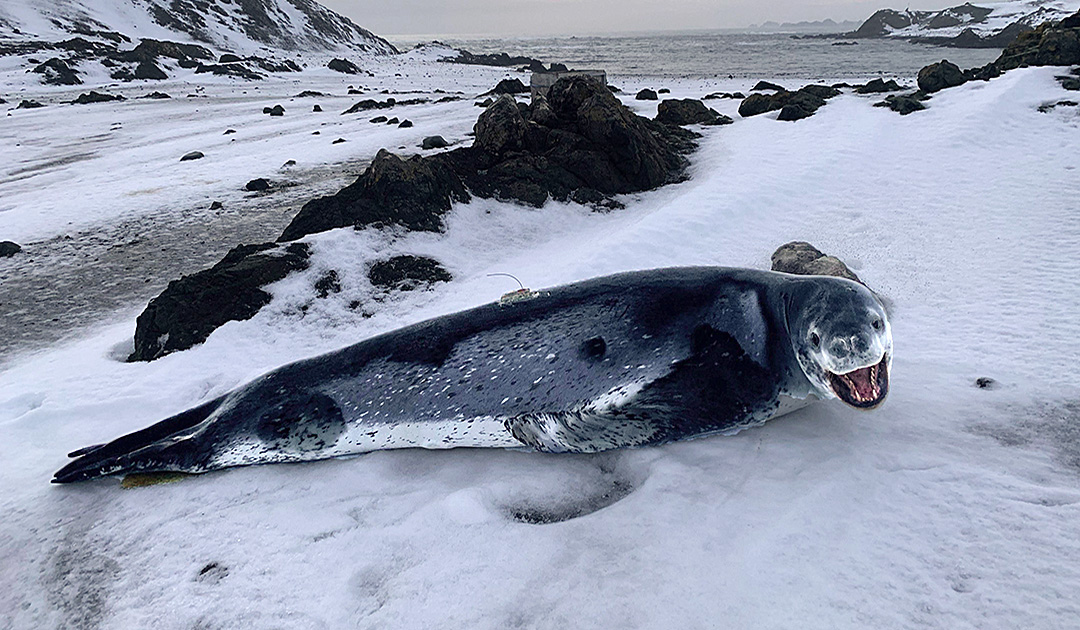
Researchers and collaborators at Texas Baylor University have been searching for answers to the question of how leopard seals can survive in extreme polar conditions. The combination of Antarctica’s extreme climate and this species’ secluded lifestyle makes the leopard seal one of the most difficult top predators on Earth to study. The research team collected data on the physiology of 22 leopard seals, as this enigmatic Antarctic predator has never been studied in such detail before.

It is undisputed that the climate of the Antarctic Peninsula is warming, resulting in less sea ice and thus less habitat for predators and prey. These changes could spell trouble for many Antarctic organisms. Scientists know shockingly little about the behavior and basic physiology of leopard seals. What is known, however, is that this highly adaptable seal feeds on a wide range of prey.
In the first study, funded by the ‘National Science Foundation’, biologists had a common goal of learning more about the leopard seal. For two years, the research team studied 22 leopard seals off the western part of the Antarctic Peninsula, in an area that is warming and changing rapidly. They weighed and measured each seal and monitored their actions and dive patterns using satellite/GPS tags.
In a study published in ‘Frontiers of Marine Science’, Sarah Kienle and her team documented the species’ flexible behavior and traits that may give the leopard seal the resilience it needs to survive in the extreme climatic and ecological conditions of Antarctica.

One of the conclusions biologists have drawn is that adult female leopard seals are much larger than adult males. In fact, the females are 1.5 times larger and longer. The team measured one of the largest leopard seals, an adult female nicknamed “Begonia,” which weighed 540 kg. Female-centered sexual dimorphism, in which females are larger, is uncommon in marine mammals, but the leopard seal is the best example among 130 species of a markedly different appearance occurrence in the same species.
Judging from movement data, female leopard seals spent more time leaving the water to rest on the ice or on land than males. The two adult female leopard seals in this study spent two weeks on an ice floe in the middle of the ocean without eating or going into the water. Kienle and her colleagues suspect that female leopard seals give birth to and nurse their young during this two-week rest period.

Male and female leopard seals swim short and long distances in both coastal areas and the open ocean. A leopard seal swam only 46 km from where the team was working with the seal and stayed in and around the Antarctic Peninsula islands. Another seal, however, swam 1,700 km from the site of the tag during the same period and reached South Georgia, more than a thousand kilometers away.

Seals like elephant seals can dive over one thousand meters deep and hold their breath for more than 40 minutes. However, the research team recorded the longest and deepest dive ever recorded by a leopard seal, included a male nicknamed “Deadpool,” which descended to 1,256 meters in 25 minutes.
Heiner Kubny, PolarJournal
Link to the study from ‘Frontiers of Marine Science’.
More on the topic





